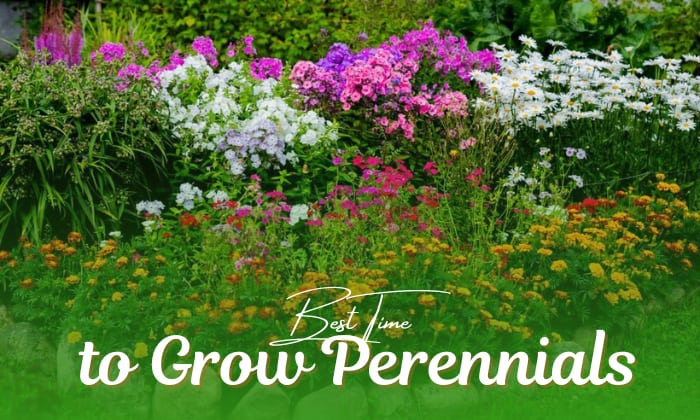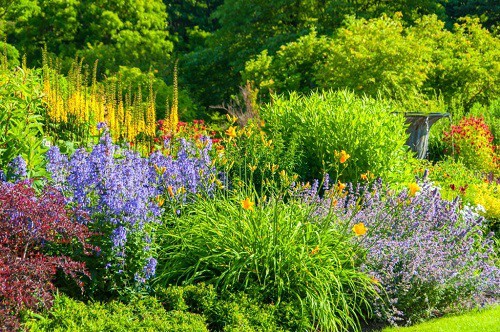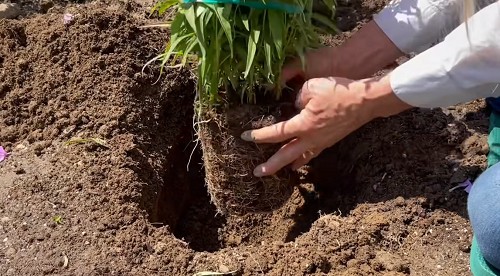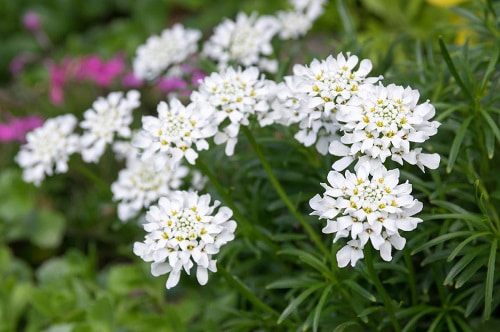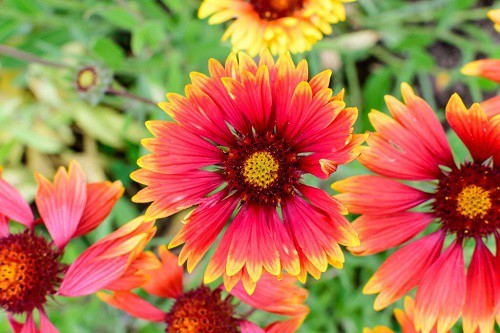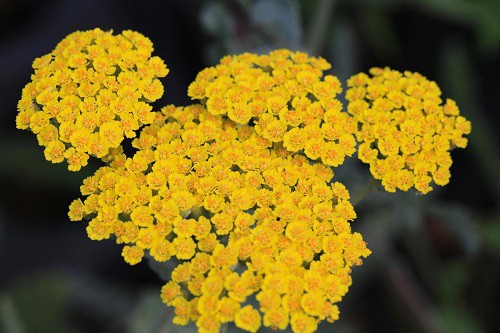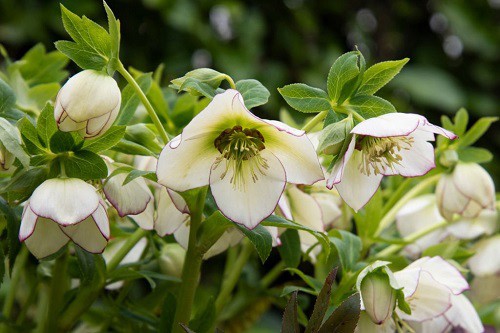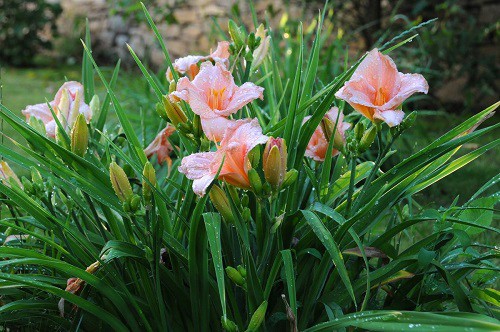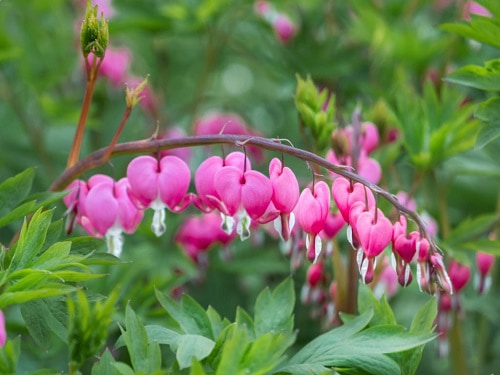The key to cultivating a thriving and enduring garden is to discover the perfect timing on when is the best time to plant perennials. Understanding when to grow these resilient plants is crucial to achieving your goal.
Seasons play an important role and the best time of the year to plant perennials would be in Spring which stretches from 20th March to 15th May, as well as in Fall, which starts from 20th September to October. Read below to learn more!
Table of Contents
The Best Time to Grow Perennials
1. Fall Season
When striving for optimal results, a good time to plant perennials would be in early Spring or Fall. Planting them in the Fall, around September 22, gives the advantage of allowing them to grow and establish their roots before Winter.
It should take at least 6 weeks for the roots to be well-established. This must be done before freezing weather takes over the much-needed cool atmosphere. They tend to thrive and endure better once they have taken their place on the surface.
Once the Winter season approaches, the perennials will continue to grow stronger roots until Spring takes place. When it does, the plants will reach their active growth state, allowing them to bloom wonderfully until then.
2. Spring Season
Planting perennials in Spring, which is around March 20 or in April, is another favorable period for growing perennials. Doing it early is better than planting them late so that the plants have established their roots entirely before the intensely hot weather.
Spring also signals gardeners that the soil isn’t frozen anymore and the ground is warming up, becoming an ideal environment for planting a perennial garden. This condition stimulates the plants’ growth and begins establishing their roots.
There are plenty of perennial flowers to plant in Spring and each variety can be grown together as a batch, producing a vibrant and colorful landscape.
Frost Dates and Planting Zones
Another key factor to consider is frost dates which can harm your outdoor perennial plants due to beyond-freezing temperatures. It is handy to know frost dates in certain planting zones to prevent such disasters.
Not only do we have to think about when should perennials be planted, but we also have to think about where they are suitable. It would also depend on different areas or the state that you are living in.
Planting zones help determine areas suitable for the plants you wish to cultivate in your garden. Here are some zones that are great for perennials and their frost dates below.
| Average Last Frost in Spring | Average First Frost in Fall | |
| Zone 4 | April 24 to May 12 | September 21 to October 7 |
| Zone 5 | April 7 to April 30 | October 13 to October 21 |
| Zone 6 | April 1 to April 21 | October 17 to October 31 |
| Zone 7 | March 22 to April 3 | October 29 to November 15 |
For example, if you live in Michigan, which is in Zone 5, you would know that this area could produce a moderately cold winter. But northern Michigan which is in Zone 4, tells you that its climate is cool and suitable for growing hardy plants.
Another example would be in Massachusetts. It’s both in Zone 5 and in Zone 7. With that information, you’re able to know that this state has warm summers as well as cold winters. Most hardy plants are able to grow successfully as long as their needs are met.
Knowing about planting zones ensures you choose the right place to start your perennial garden or know what variety of perennials are suitable.
How to Plant Them?
You can follow these 8 Easy Steps:
- Begin by clearing the area of debris such as weeds and rocks that are present around or underneath the surface.
- Dig a hole that is twice as large and wide as the container so that there is enough space for the root ball.
Tip #1: When growing perennials in pots, the bigger the pot, the better! It is because perennials have large root systems.
- Proceed to remove the plant and its roots from its container as gently as possible.
Tip #2: If you want to plant perennial seeds instead of container-grown perennials, remember that patience plays a big role in this journey since seeds tend to grow slower.
- If you have compost or fertilizer, you can mix them and add them to the soil up to 3 inches.
- Start placing the plant in the hole and fill it up with quality soil around the roots, then firm it with your hands.
Tip #3: If you’re going to plant perennial bulbs, you have to make sure the pointy part is facing up so you can find it easily. You don’t have to worry if you don’t get it right, the bulb has its way of going back up!
- Water your perennials and maintain the soil’s moisture with the use of mulch as well as bark or straw.
- If you have organic plant food, you may add it to boost your plant’s growth and health.
- Lastly, always remember to water at least an inch every week so that the roots may grow and establish themselves before freezing weather.
Varieties of Perennials
1. Perennials that Bloom Early
Have you been longing for the beauty of early spring after the garden’s long winter slumber? Get ready to embrace the enchantment of nature’s early awakening with these remarkable perennials!
Dianthus (Carnations)
Myosotis (Forget-Me-Not)
Iberis (Candytuft)
2. Perennials with Tolerance for Drought
In regions with limited rainfall and dry climates, these resilient gems are capable of surviving arid conditions with only minimal water. They have the ability to conserve moisture while staying beautiful!
Gaillardia (Blanket Flower)
Lavender
Achillea (Yarrow)
3. Perennials for Low-Quality Soil
A variety of perennials have adapted to make the most of limited nutrients and selecting them would uncover their ability to withstand poor soil conditions, giving you the garden you wanted even in difficult growing conditions!
Hellebores (Lenten Rose)
Hemerocallis (Day Lily)
Dicentra (Bleeding Heart)
Frequently Asked Questions
How late is too late to plant perennials?
It is never too late to plant perennials. However, one can face difficulty in planting them in Summer, which is around in June, in July, and in August, due to its hot weather, and in Winter because of frosty temperatures which can freeze the surface grounds.
Is it better to plant perennials in the Spring or Fall?
While both seasons are favorable durations, Fall is the best time to plant perennial flowers.
Temperatures in Fall are cool so both the plants and yourself won’t have a hard time gardening. But the best part is that planting in fall rewards your glorious efforts with a beautiful garden in Spring!
What is the most hardy perennial flower?
The hardiest perennial flower is the Coneflower, which is also known as Echinacea. They are heat-tolerant and can survive even in the poorest of soils. With their striking appearance and resilience, they are a beloved addition to your perennial garden.
Conclusion
It is truly a challenge to start your own perennial garden. But today, we have learned that to know when is the best time to plant perennials, despite the suggestion telling us that Fall and early Spring are favorable periods, ideal timing varies based on climate, type of perennial, and the area that you live in.
Through the alignment of planting times with optimal conditions, you can create a garden that showcases the beauty and resilience of these stunning plants!
Related:

Hi, I am William – Floridayards’ digital content creator. My job is to find answers to all your concerns with thorough research and our team’s expert advice. I will also bring you honest reviews on the best products and equipment for raising your beautiful garden. Please look forward to our work!


